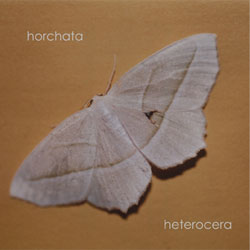dw033 - Horchata - Heterocera Sepulchrave (c) 2009 On Heterocera, it's all about moths. According to its creator Michael Palace, this music originally evolved from a set of electronic pieces which were gradually stripped from vocals and beats, until only drones and ambiance remained. This was subsequently mixed with various field recordings of nightly moth sounds, resulting in seven songs of creepy drones with occasional skittering in the background. Heterocera plays like a close, but far less agressive cousin to Adaptation and Survival, and evokes a similar gloomy atmosphere, reminiscent of Angelo Badalamenti's ambient work with David Lynch. Alternatively, it's something that could very well accompany the latest Resident Evil game. The first half of the album is arguably stronger than the second, with songs as "Scale", "Noctural" and "Chrysalis" among the highlights of this work. As a final note, Heterocera is completely free to download from the label's website. Alan Walker (c) 2008 Horchata is Mike Palace, a hugely prolific crafter of sonic landscapes. His list of releases is impressive – see his Official site. The Heterocera collection is a distillation of works created between 2003 – 06, a reductive process that has defined the sonic spaces, much as a sculptor defines the outline of a statue. Taking it’s inspiration from the heterocera (moths), sub-order of lepidoptera, the higher order in the taxonomic classification tree. In general terms, the butterfly (order-partner of the moth) is a creature of the light, heterocera are beasts of the shadows, seeking concealment and favouring the night. Thus the metaphor is drawn for Horchata’s subtle, minimal work of slowly shifting tones and camouflaged harmony. I would hesitate to use the term “ambient” to describe this work - an analogy here to the taxonomic controversy defining moth and butterfly - it is, in a more drilled down sens, soundscape – the sonic equal to colourfield painting – and here where the shades are grey and muted browns. There are ambiguous field recordings amongst clouds of pink noise and tectonic slabs of sound. And dialogs between percussive glitches that infuse the work with a sense of the natural landscape, but without resorting to the cliché. It is all done with panache and painstaking understatement. This reviewer works using reductive techniques, and the process of selection, removal, replacement, modification is mentally intensive and Horchata demonstrates a mastery of the technique here, where everything is stripped back to the minimum, yet retaining the essence of the original. Below, some stream of conciousness impressions of the soundscapes - resorting to a banal description of the literal would do no justice to their subtlety. 1. Scale (5:22) Crescendo/diminuendo; mantra-like subliminal melody. I could listen to this on loop all day. A pianissimo of wave-call and response almost vanished among the upper canopy of a lightning blasted rain-forest. 2. Nocturnal (8:21) Wings; curves in mirror image, beating in micro-volume. In cunning disguise of owl eye and claw. Or flattened in landscape mimicry. A metaphor of concealment and disguise. 3. Stemmata (10:07) Drone of micro-whorls, a fingerprint of tone. Punctuations; join and rejoinder. A pyroclastic flow in slow motion of self-similarity, fractal like, massive or microscopic with no reference point for size. 4. Chrysalis (5:03) |
 |

